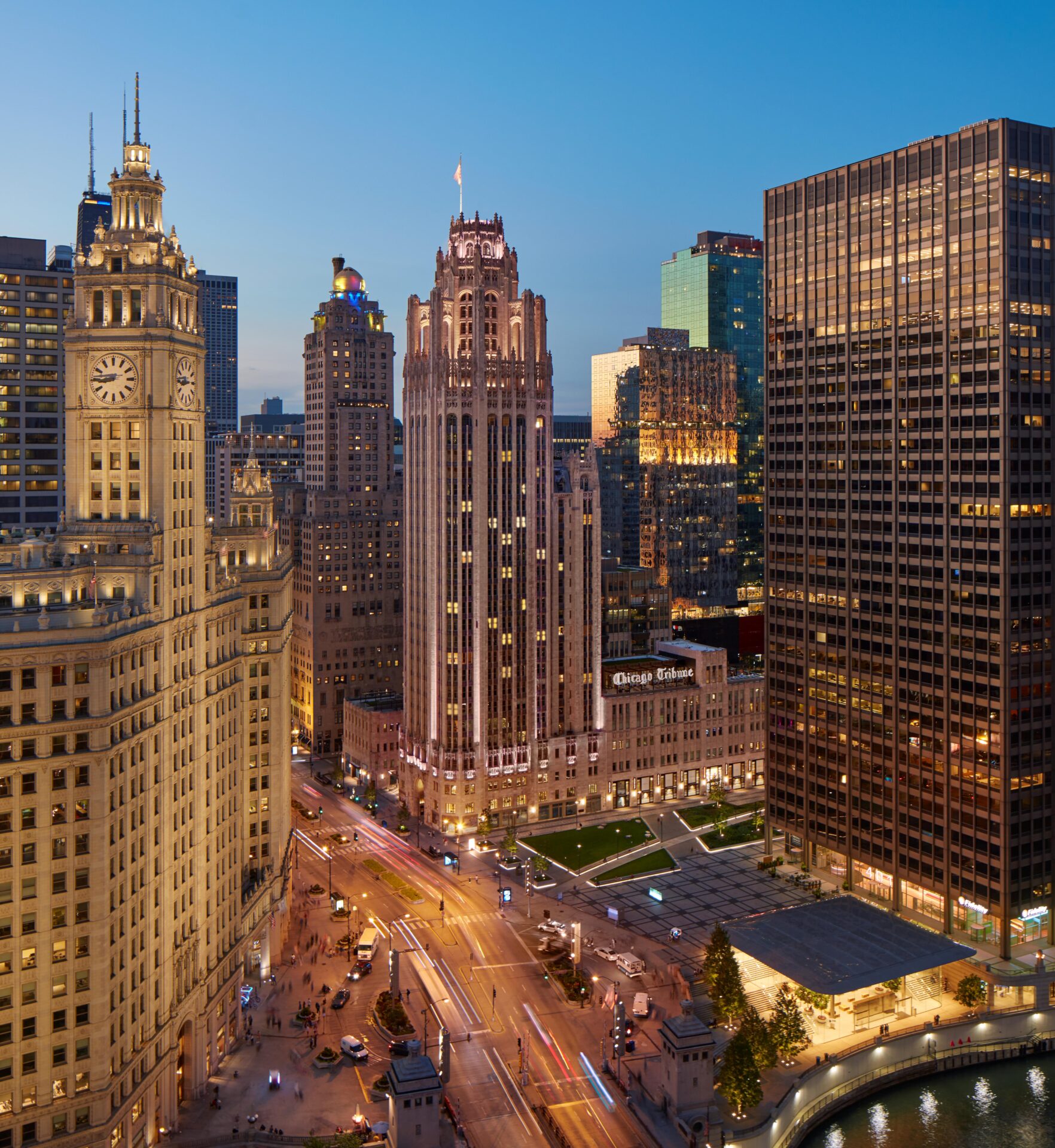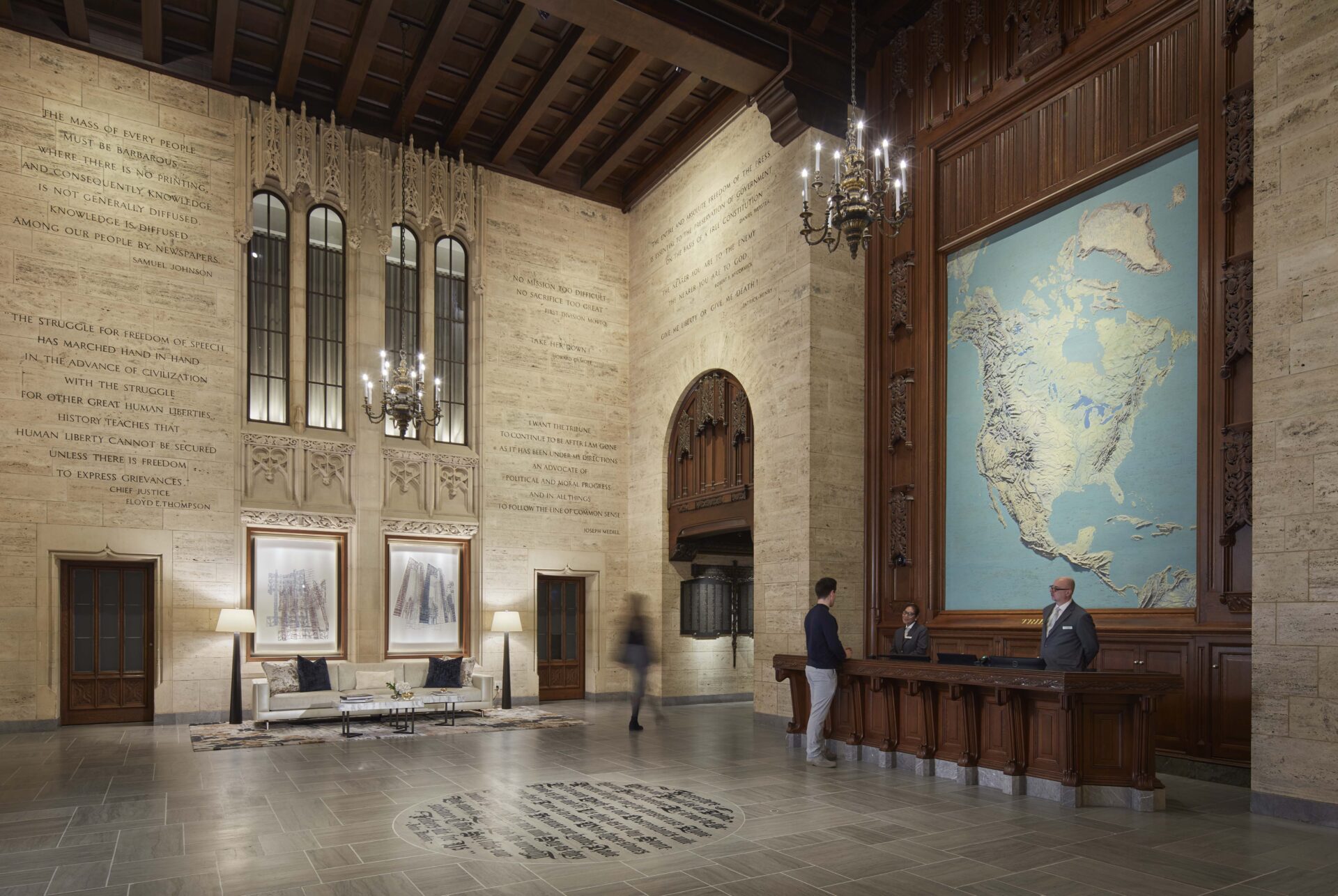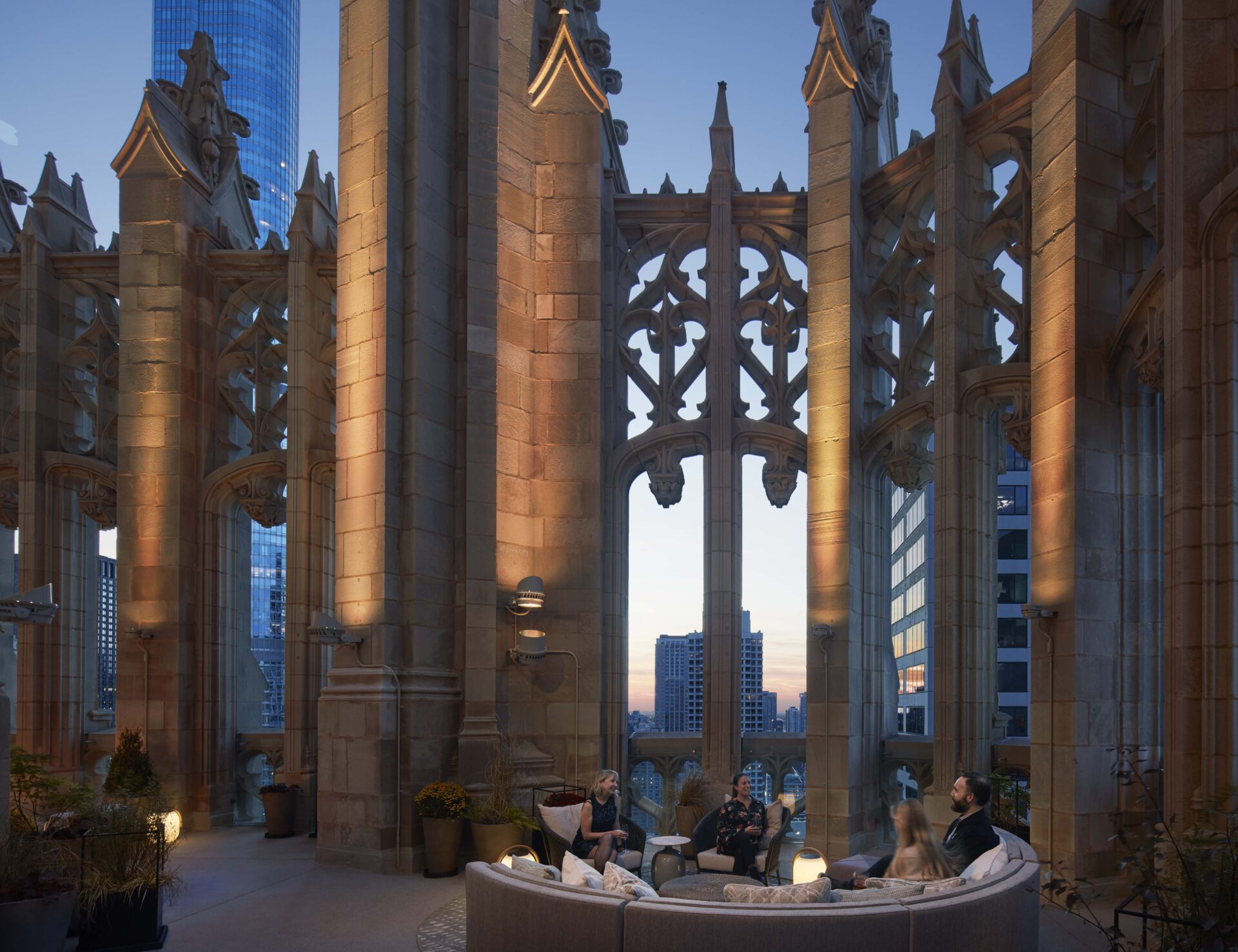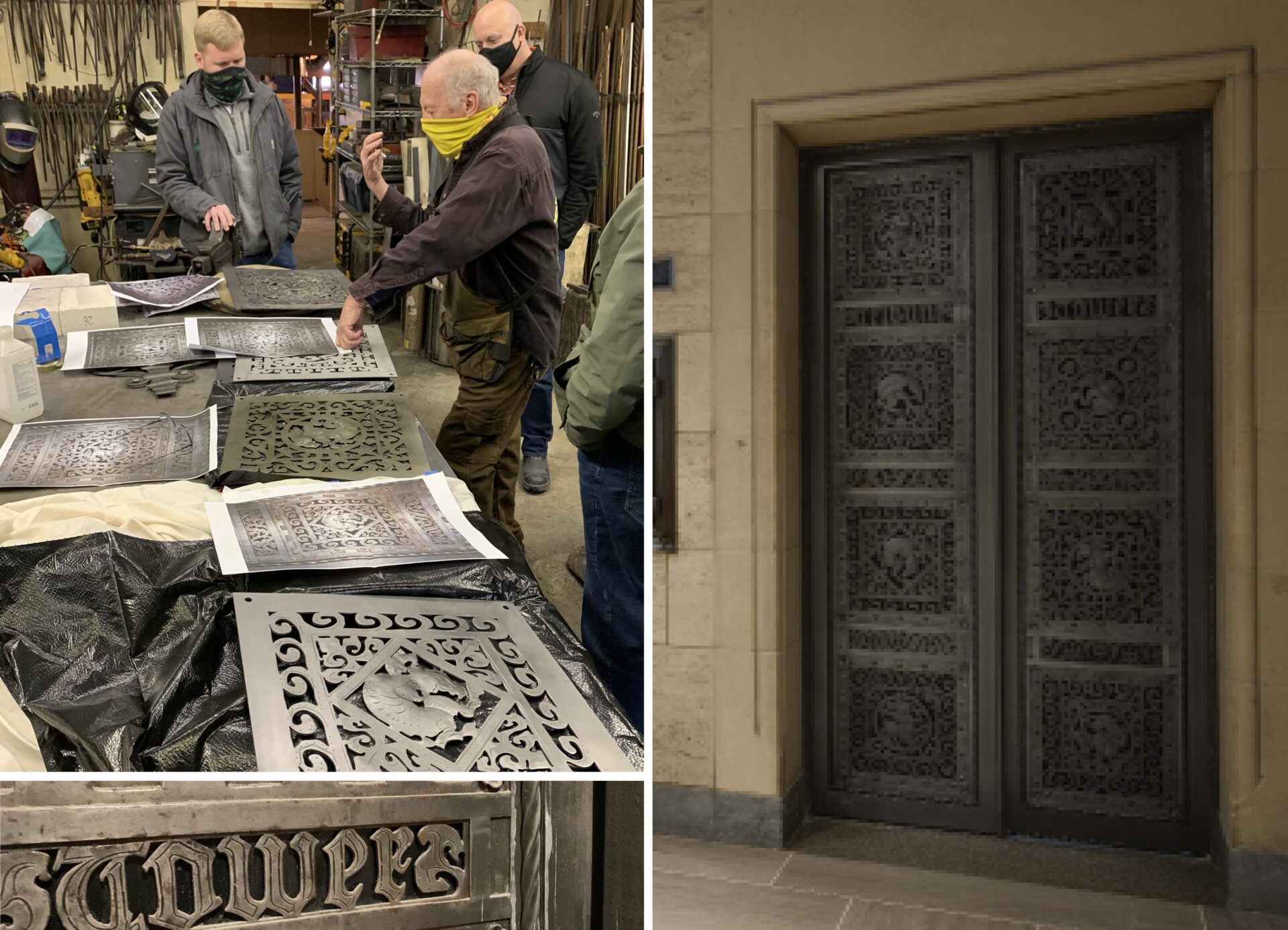2023 Landmarks Illinois Richard H. Driehaus Foundation Preservation Award for Adaptive Reuse
The Tribune Tower, completed in 1925, is one of Chicago’s most treasured landmarks, and the adaptive reuse project converted the historic tower and its original printing plant, radio and television buildings into a broad range of residences. The public will continue to take pride in the Tribune Tower’s architectural beauty and global storytelling, and now residents will live in a unique piece of history. The design team was committed to retaining the identity of the building, preserving and restoring historic elements like the limestone façade and iconic Chicago Tribune sign, and creating historically sensitive and innovative modifications for a modern residential experience.
(Photo credit: Dave Burk)




